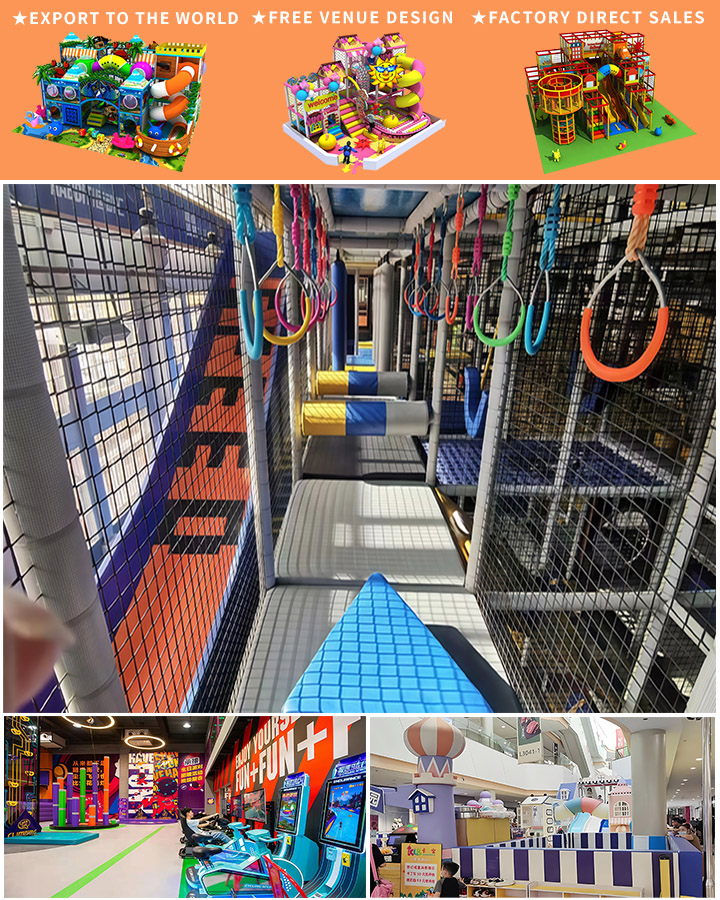In today’s fast-paced world, creating an environment that promotes children’s physical and imaginative growth is more important than ever. Indoor playgrounds have emerged as a fantastic solution to keep kids engaged, active, and entertained, regardless of the weather. This comprehensive guide will explore the key considerations for setting up an indoor playground, the essential equipment for different age groups, and how to make the most out of your commercial space.
Understanding the Importance of Indoor Playgrounds
Indoor playgrounds provide a controlled and safe environment where children can expend their energy, develop motor skills, and enhance social interactions. Unlike outdoor play areas that are subject to weather conditions, indoor playgrounds offer a reliable alternative for year-round fun.
Benefits of Indoor Playgrounds:
- Safety: Controlled environments with soft flooring reduce the risk of injuries.
- Convenience: Accessible all year round, irrespective of weather.
- Variety: Offers a wide range of activities that cater to different age groups and interests.
- Social Development: Encourages interaction and teamwork among children.
Essential Equipment for Indoor Playgrounds
When designing or updating an indoor playground, it’s crucial to have a mix of equipment that caters to various age groups and activity levels. Here are some must-have pieces of equipment for any indoor playground:
For Toddlers (Ages 1-3)
- Soft Play Areas: These areas usually include foam blocks, soft slides, and ball pits. They are perfect for young children who are still developing their motor skills.
- Interactive Toys: Simple, interactive toys like building blocks and shape sorters can keep toddlers engaged and help in their cognitive development.
For Preschool Kids (Ages 3-5)

- Play Structures: Small climbing frames, tunnels, and bridges can be very engaging for preschool kids. Ensure these structures are padded to prevent any accidents.
- Role-Play Areas: Set up small kitchens, supermarkets, or doctor’s clinics to encourage imaginative play.
For School-Age Children (Ages 6-12)
- Adventure Play Equipment: Larger climbing walls, zip lines, and obstacle courses are excellent for older kids who need more challenging activities.
- Electronic Games: Incorporate arcade games and virtual reality setups to add a tech-savvy twist to the traditional playground.
Designing the Ideal Indoor Playground
The layout and design of your indoor playground should not only be visually appealing but also functional and safe. Here are some key design tips:
Safety First
- Ensure the floor is padded with materials such as rubber mats or foam to cushion falls.
- All equipment should be securely anchored and free from sharp edges or corners.
- Regular maintenance checks are essential to ensure all equipment remains in good condition.
Layout Considerations
- Create distinct zones for different age groups to prevent overcrowding and conflicts.
- Make sure there is enough space around each piece of equipment to avoid collisions.
- Incorporate seating areas for parents and guardians to supervise their children comfortably.
Aesthetic Appeal
- Use bright, inviting colors and themes to make the space more attractive to children.
- Decorate with murals or artwork that stimulates creativity and imagination.
Commercial Aspects of Running an Indoor Playground
Running a successful indoor playground involves more than just having the right equipment; you also need to consider the business side. Here are some tips for commercial success:
Marketing Strategies
- Develop a strong online presence with a website and active social media profiles showcasing your facilities.
- Offer membership packages or loyalty programs to encourage repeat visits.
- Collaborate with local schools and community centers for group visits and events.
Pricing and Revenue Streams
- Set competitive pricing while ensuring you cover operating costs and maintain profitability.
- Besides entry fees, consider additional revenue streams such as hosting birthday parties or offering workshops.
Staffing and Safety
- Employ friendly, trained staff who can supervise the play area and assist children when needed.
- Implement strict safety protocols and first aid measures to handle any emergencies.
Conclusion
Creating an indoor playground that appeals to children of all ages involves thoughtful planning, a mix of engaging equipment, and a keen eye on safety and business operations. By focusing on these elements, you can create a vibrant, exciting space that children will love and parents will trust. Whether you are starting a new venture or upgrading an existing one, this guide provides a solid foundation for making your indoor playground a resounding success.




